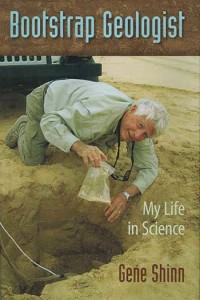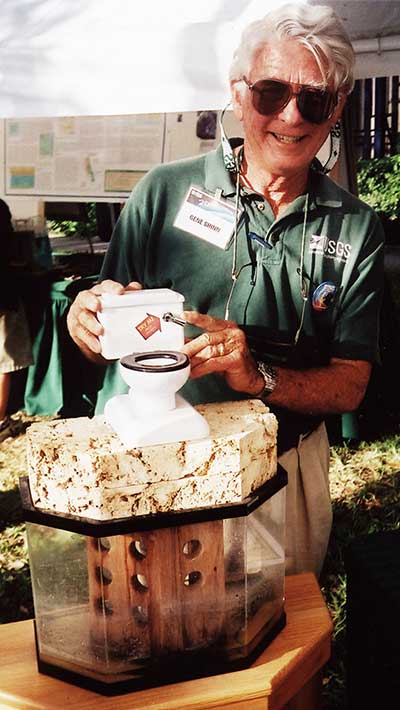 His skill in communicating complex scientific research in a way that that anyone can understand shines through in his new book, Bootstrap Geologist, My Life in Science. The highly readable book looks at some of the most important issues facing Florida and the world, explaining them in layman’s terms that draw a reader into the heart of the scientific debate.
His skill in communicating complex scientific research in a way that that anyone can understand shines through in his new book, Bootstrap Geologist, My Life in Science. The highly readable book looks at some of the most important issues facing Florida and the world, explaining them in layman’s terms that draw a reader into the heart of the scientific debate.
Take offshore drilling, for instance. Shinn describes how he began his career in the 1950s diving in the Florida Keys where oil wells were already being drilled. After earning a degree in zoology while on a music scholarship at the University of Miami, Shinn went to work for Western Geophysical Company to help find oil in the Bahamas and along the north coast of Cuba. His job was to rig the explosives, which led to a career in geology that included 15 years with Shell Oil and more than 30 years with the U.S. Geological Survey. He retired from the USGS Coastal and Marine Science Center in St. Petersburg in 2006 and is now a courtesy professor at the University of South Florida’s College of Marine Science in St. Petersburg.
And those decades-old wells off Cuba? He had expected test wells drilled last year to be successful. “It surprised me that they didn’t find oil,” Shinn relates, “but it’s a very dangerous place because of the depth and the currents.”
Shinn also was a leading researcher in the quest to link African dust with the die-off of corals in South Florida and the Caribbean. He tells about attending a 1994 conference on San Salvador – the remote island where Christopher Columbus may have landed – when he realized that coral die-offs in the Florida Keys were not an isolated incident. By chance, he read an article about nutrients in African dust feeding air plants in the Amazon and he began to wonder if the same dust could be killing coral reefs.
More in-depth research showed that storms transported hundreds of millions of tons of dust from Africa and the phenomena had been documented as far back as 1846 when Charles Darwin reported dust falling on the HMS Beagle. A more recent study showed a significant increase in dust coinciding with die-offs in coral reefs.

Initially, Shinn focused on nutrients – specifically high iron content – in African dust causing algal blooms that choked out the coral, but then he began to wonder if the dust could also carry microorganisms that cause disease. Prevailing wisdom at the time said that microbes could not survive days of exposure to ultraviolet light, but Shinn found the funds to hire a microbiologist who discovered 65 species in just six months. About 10% of the microbes are known to affect humans with damaged immune systems and another 30% are plant pathogens.
Even knowing that microbes are being carried across the ocean doesn’t necessarily mean that they’re causing the corals to die, he emphasizes. “Correlation is not causation, we still have more work to do.”
The chapters on Atlantis also made for fascinating reading. Funded by a charismatic New Age thinker, Shinn and his friends dove off Bimini looking for Atlantis – on weekends so it wouldn’t ruin their reputations. Samples from monoliths showed that the rock was identical to that found on beaches today, and the “mysterious” pavement-like rock formations were found around the world.
He wrote an article for the Skeptical Inquirer that resulted in an invitation to speak to the Geological Society of America and a scholarly presentation for the International Association for Sedimentology as well as interviews with BBC, Discovery Channel and National Geographic television channels.
Although Shinn calls himself a bootstrap geologist and made it to the top of his profession without an advanced education, he’s concerned that kids might get a mixed message about his success. “I wrote the book to inspire students,” he said. “It wasn’t that I didn’t want an education, it was the circumstances at the time. It would have been nice for me, and I wouldn’t want anyone to think that it isn’t important.”
Shinn was awarded the Twenhofel Medal in 2009, the highest award given by the International Society for Sedimentary Geology and the 2002 Shoemaker Award for Distinguished Achievement in Communications from USGS.
[su_divider]